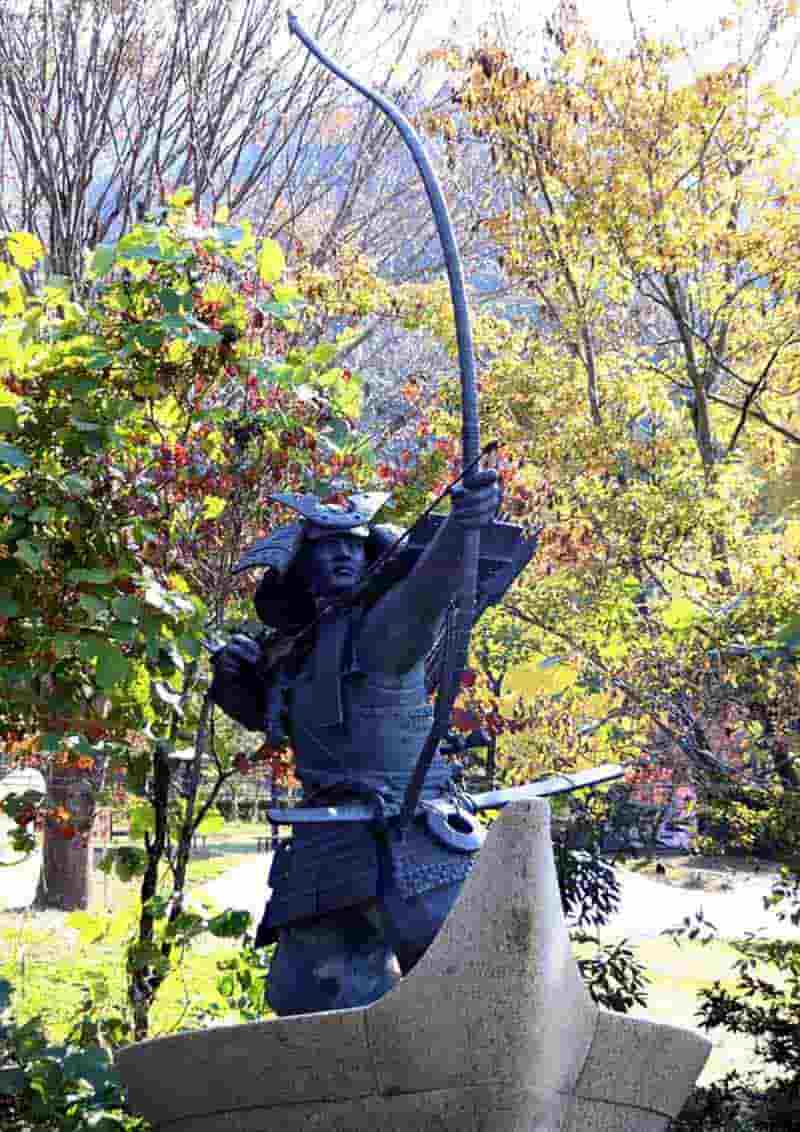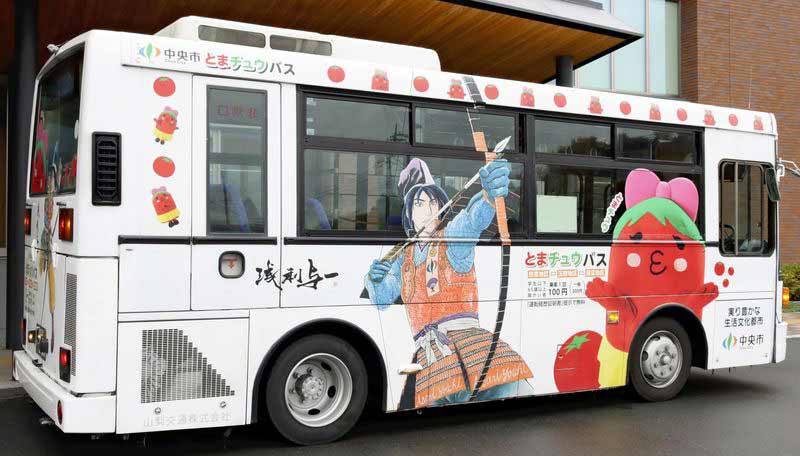
A statue of Asari Yoichi in Chuo, Yamanashi Prefecture
November 23, 2021
CHUO, Yamanashi — It has been 800 years since the death of Asari Yoichi, a warrior who governed present day Chuo City, Yamanashi Prefecture. His prowess is described in “The Tale of the Heike,” and he was deeply trusted by warlord Minamoto no Yoritomo. Despite this history, his memory had faded in the city in recent time. Because of this, the Chuo city government decided to promote Yoichi, who is also said to have been a master archer.
According to “The Tale of the Heike,” Yoichi shot an enemy samurai who was about 440 meters away during the Battle of Dannoura, a decisive battle in 1185 between the Genji and Heike clans.
Yoichi mainly ruled the city’s Toyotomi district from the end of the Heian period (794-late 12th century) to the Kamakura period (late 12th century to 1333), and was a part of the Kai Genji clan, which warlord Takeda Shingen (1521-1573) is said to be a descendant of.
He is considered to be one of the “three Yoichis” along with Sanada Yoichi, who was killed in Yoritomo’s first battle, the Battle of Ishibashiyama, and Nasu no Yoichi, who shot down the target of the enemy’s fan in the Battle of Yashima.
Asari Yoichi is often mistaken for Nasu no Yoichi, and many Chuo residents “don’t even know his name,” a city official said.
To make the local hero a recognized figure, the city began operating a bus bearing his likeness that runs around the city. He is also featured in the city’s magazine and on its website.
There is a memorial tablet kept in the city that says that Yoichi died in 1221 at the age of 73. Therefore, the city designated this year as the 800th anniversary of his death and has been holding related events.
In a Yoichi festival designed for children on Nov. 7, participants visited historical sites in a quiz rally and dressed up in cardboard armor.
The Toyotomi folk museum has been holding a special exhibition that will run through Nov. 28, which introduces several candidate sites where Yoichi’s house is said to have existed.

A wrapping bus with an illustration of Asari Yoichi
Additionally, the Daifukuji temple — where Yoichi’s grave is located — has unveiled a wooden seated statue of Yakushi Nyorai, or the Medicine Buddha, that is believed to have been worshipped by Yoichi. The statue was restored and returned to the temple earlier this month. And on Nov. 28, the temple will hold a lecture about the value of the statue.
“We want more people to know about Yoichi as our local hero,” a city official said.
Related Tags
"Features" POPULAR ARTICLE
-

Sanrio to Open Museum in Yamanashi Pref. Dedicated to Founder, Exhibits Include Hello Kitty, Other Characters
-

Autumn Foliage Surrounds Visitors to Tokyo’s Showa Kinen Park
-

My Daughter No Longer Speaks to Me, But I Want to See Her and My Grandchild
-

Kumamoto: Public Bath Refurbished as Library Where You Can Chat, Take Photos
-

Frozen Vegetables: Demand Rises for Convenient, Tasty Domestic Produce
JN ACCESS RANKING
-

Keidanren Chairman Yoshinobu Tsutsui Visits Kashiwazaki-Kariwa Nuclear Power Plant; Inspects New Emergency Safety System
-

Tokyo Economic Security Forum to Hold Inaugural Meeting Amid Tense Global Environment
-

Imports of Rare Earths from China Facing Delays, May Be Caused by Deterioration of Japan-China Relations
-

University of Tokyo Professor Discusses Japanese Economic Security in Interview Ahead of Forum
-

Japan Pulls out of Vietnam Nuclear Project, Complicating Hanoi’s Power Plans

























